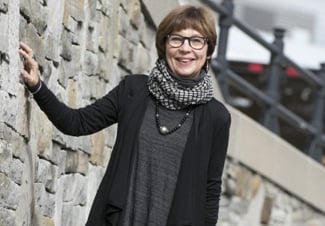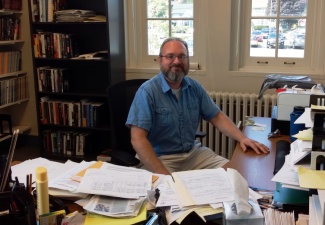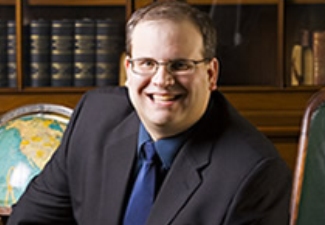New Partnership Assessing Creation of Campus-Community Emergency Microgrid
SUNY Plattsburgh is partnering with the City of Plattsburgh and other community businesses to determine the feasibility of operating a microgrid in the event of a loss of power in the city.
According to the New York State Energy Research and Development Authority, microgrids are local energy networks able to separate from the larger electrical grid during extreme weather events or emergencies, providing power to individual customers and crucial public services such as hospitals, first responders, and water-treatment facilities. The SUNY Plattsburgh feasibility study is being funded through the NY Prize Competition, which is administered by NYSERDA with support from the Governor’s Office of Storm Recovery.
SUNY Plattsburgh’s proposal was accepted by NYSERDA in Stage 1 of the NY Prize Competition and was awarded $98,677 for the initial study. Willdan Energy Solutions of Webster, N.Y., will lead the feasibility study in collaboration with a team of smart grid and power engineers from the Brookhaven National Laboratory on Long Island. In addition to SUNY Plattsburgh, other participants in the study include:
City of Plattsburgh
Meadowbrook Healthcare
Plattsburgh City School District
Plattsburgh Municipal Lighting Department
Samuel F. Vilas Nursing Home
University of Vermont Health Network, Champlain Valley Physicians Hospital
The study will look at the feasibility of building and operating a community microgrid that would maintain electric services for participating customers/facilities and the community at large in the City of Plattsburgh area. It would operate when weather events or other emergencies severely disrupt the capacity of the local distribution and transmission system to serve essential community needs.
Dr. Curt Gervich, associate professor in the Center for Earth and Environmental Science at SUNY Plattsburgh and co-chair of the study, said the project will look at the viability of a microgrid within the Plattsburgh Municipal Lighting Department’s electric distribution system.
“With nearly 3,000 students in residence on campus, as well as the critical-care needs at the hospital and nursing homes, and no permanent generation resources in the Plattsburgh community electrical system, the potential for prolonged power outages resulting from flooding and winter storms are significant threats and can endanger our residents on and off campus,” Gervich said.
“During the study, we will explore the possibility of islanding the college’s electrical system with nearby critical healthcare facilities as well as the Plattsburgh High School. SUNY Plattsburgh will explore the use of a wide range of innovative technologies and systems including combined heat and power generation, thermal energy, solar, wind and biogas. Additionally, the feasibility study will explore power generation using the community’s gravity-fed water distribution infrastructure.”
The study also will evaluate the installation of distributed generation resources to support critical facilities since there are no permanent generation resources currently located in the city’s electrical distribution system. None of the existing backup generators have sufficient capacity to support the electric load of the facilities entirely or indefinitely, and all of the backup generators are electric-only with manual start.
Just as important, several critical facilities currently lack backup power. The Field House facility located on the SUNY Plattsburgh campus, which is a designated emergency shelter for the American Red Cross, does not have a backup-power supply system.
Considering winter weather and increasing flood concerns in the region, moving reliance from stored fuel operated — No. 2 fuel oil, diesel — backup generators to some other alternative fuel-sourced backup generator at critical facilities and load pockets within the proposed grid location will be studied.
Other major tasks in the study include:
Evaluating the feasibility of locating at least 13,000 kilowatts of generation resources to support critical facilities
Evaluating the establishment of a distribution infrastructure to encompass critical facilities
Exploring locating solar PV renewable, small hydro, and natural gas fired generation resources for continuous non-emergency operations
This fall, SUNY Plattsburgh will integrate the feasibility study into its experiential learning program.
“This project could be a central focus for learning activities focused on civic engagement and applied learning through inquiry- based learning on real time and local problems,” said Dr. Lauren Eastwood, associate professor and incoming chair of the Department of Sociology at SUNY Plattsburgh. “Students would also have an exceptional context in which to study and understand the relevancy of global issues to local concerns. The infrastructure for this and other pedagogical initiatives is already in place at SUNY Plattsburgh through the Center for Teaching Excellence and the Center for Public Service.”
SUNY Plattsburgh will submit its feasibility study by Feb. 1 for consideration in the design stage of the competition. During the design stage, the NY Prize Selection Committee will approve up to $1 million in funding for approximately 10 detailed designs. Approximately five of those projects are expected to win approval for up to $7 million per project for build and construction.
News
Knelly Named Special Adviser to SUNY for Clinton Transition

Quebec Studies Presents Montreal Historian in Virtual Talk on 1913 School Strike

Campus Shines Light on Developmental Disabilities During Awareness Month and Beyond
Black Solidarity Day Officially Added to SUNY Plattsburgh’s Academic Calendar

SUNY Plattsburgh Political Science Professor to Zoom a Discussion on the Russian Invasion of Ukraine
